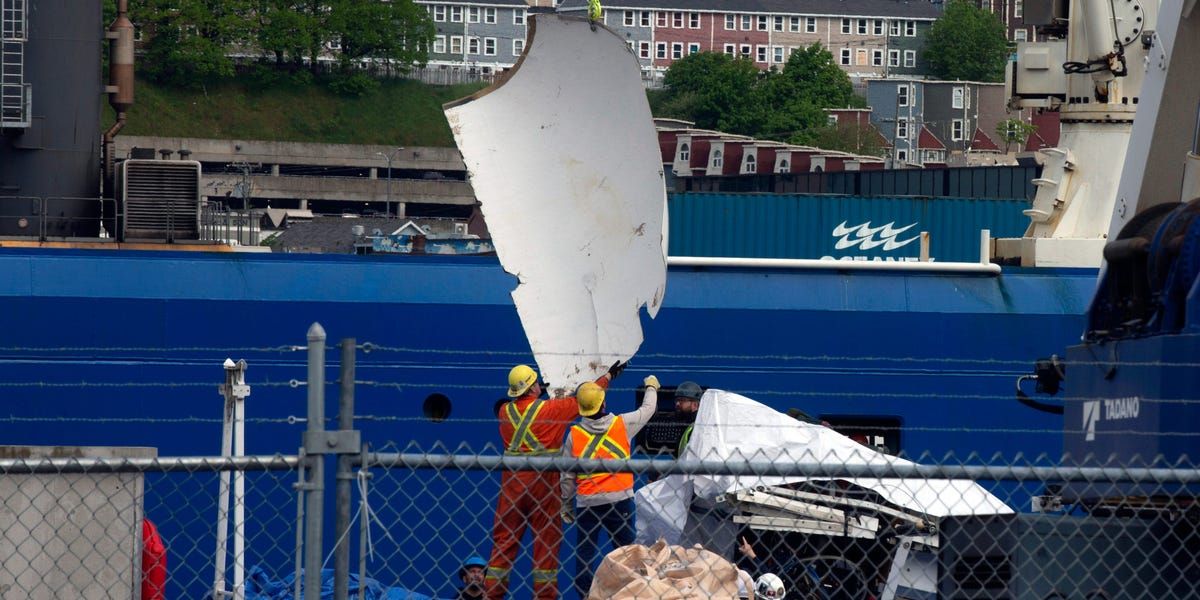Larger Titan Sub Fragments Will Make Investigation Easier: Expert
Experts have ended up with larger fragments of the imploded Titan sub than they had anticipated.
An expert told DailyMail.com that this would likely make an investigation into the implosion easier.
Retrieving larger-than-expected fragments means there are now more "pieces to the puzzle," he said.
Top editors give you the stories you want — delivered right to your inbox each weekday. Loading Something is loading. Thanks for signing up! Access your favorite topics in a personalized feed while you're on the go. download the app Email address By clicking ‘Sign up’, you agree to receive marketing emails from Insider as well as other partner offers and accept our Terms of Service and Privacy Policy
Experts had anticipated that the Titan's catastrophic implosion would leave little intact for investigators to examine.
But to their surprise, larger fragments of the vessel survived than expected, likely facilitating an easier investigation into the tragedy that killed the five people on board, according to an expert who talked to DailyMail.com.
OceanGate Expeditions' controversial Titan submersible is thought to have imploded within hours of its descent toward the wreckage of the Titanic on June 18.
Last week, photos from the Canadian outlet CBC News showed the recovery of what appeared to be structural titanium rings, parts of the front viewport, large fragments of the covering of the submersible, along with tubes and piping encased in a metal cage.
Tom Maddox, the director of Underwater Forensic Investigators, told DailyMail.com that the retrieval of such large parts defied his expectations.
"Many of us suspected that, in the case of this catastrophic failure, this implosion, that a lot of the parts would be disintegrated, particularly the non-titanium parts, which, of course, would make the investigation a lot harder to do," he said.
But the discovery of larger pieces means there are now more "pieces to the puzzle" to help unravel what led to the implosion, he said.
Maddox also told the outlet that the investigation would be challenging and could take a year or more.
"It's not like you break a vase or a glass and you find all the pieces and you put them back together to get an idea," he said. "In this case, not only are we not sure that all the pieces will be recovered, but we're not sure of the particular type of damage that was caused by that."
But he said investigating the wiring and plumbing could help identify stress points, which may provide some answers.
The National Transportation Safety Board has said it would issue a final report in 12 to 24 months.
Jasper Graham-Jones, an associate professor of mechanical and marine engineering at Plymouth University, told Insider's Marianne Guenot last week that the investigation would likely involve "effectively looking under a microscope, at all the parts" to determine what happened.
Source: Insider


